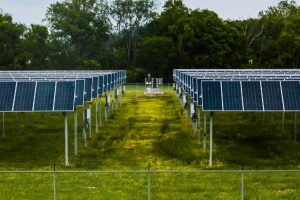Can Renewable Energy Save the World in the Future?


There has been an increasing number of debates on whether or not renewable energy technologies can help save the world in the future. Some people believe that the cost of these technologies is too high, while others claim they can make a positive difference to the environment. This article discusses the various aspects of these technologies and their environmental impact. You will learn about these technologies’ cost, reliability, and sustainability.
Costs of renewable energy technologies
Costs of renewable energy technologies continue to decrease at a prolonged rate. These reductions are a consequence of increasing competition as the sector matures.
One of the most critical factors is technology transfer. The ability to efficiently transfer the knowledge necessary to build and operate renewable power plants can be a crucial factor in the success of these systems. Some countries have imposed pollution taxes, which help promote the use of renewable resources. In addition, incentive programs may be more effective for new technologies.
Several studies have examined the various methods for forecasting the costs of renewable energy. These include sensitivity analysis, LCOE, and cost forecasting.
As the name implies, a sensitivity analysis is an excellent way to determine the feasibility of a particular technology. However, it can be challenging to know which method will yield the most accurate results. Fortunately, some studies have demonstrated that focusing on the systemic cost is more precise.
Pollution from renewable energy technologies
If you plan on using renewable energy technologies, you should know they can have environmental impacts. These are often similar to the effects of other industrial development on an equal scale. Understanding these impacts will help you identify mitigation measures.
Renewable energy sources can reduce global warming pollution and provide an alternative energy source. However, they produce air and water pollution, and some of these pollutants can harm the environment.
Several impacts are commonly associated with renewable energy projects, such as water and air pollution, noise, disturbance of wildlife, land clearing, and soil erosion. Some of these impacts may be subject to state or federal regulation.
The Clean Air Act and Clean Water Act are the primary laws governing air and water pollution. It is important to note that these laws apply to renewable and non-renewable sources.
Impact of renewable energy on river ecosystems
Run-of-river hydropower is an essential renewable energy source, which is used as a replacement for fossil fuels. However, the hydropower generation process affects a river system’s ecological and physical conditions. The effects of hydropower development are often overlooked.
The main modification from ROR hydropower is the change in the flow regime. This can have a negative impact on the ecosystem. In addition, alterations to the flow regime can also influence the biological communities that live in rivers.
A study has shown that run-of-river hydropower plants are only sometimes environmentally friendly. Some of the major impacts of these facilities include water pollution, soil erosion, disturbance of wildlife, noise pollution, and air pollution.
There are two main types of run-of-river facilities: closed-loop and pumped storage. Pumped storage has 22 gigawatts of electricity-generating capacity and is second only to China in electricity-generating power.
Reliability
Reliability is a critical metric to measure. It helps determine the reliability of any energy source and its impact on the end user. There are several metrics to choose from.
The first is the solar panel, whose failure rate is less than 5%. This is a good sign of the quality of solar panels. Similarly, the most efficient solar panels can convert 23% of the sun’s rays into usable electricity.
Another measure of the quality of a power system is the reliability index. This is an essential consideration for economic investments. Maintaining a high reliability level reduces the risk of consumers suffering from a power outage.
In the U.S., renewable energy is a small but growing part of our overall energy mix. However, there are still a few technological challenges to be solved.
Sustainability
To achieve the SDGs, a shift in global energy consumption is needed. This means using renewable energy instead of fossil fuels.
Renewable energy sources like solar and wind power have the potential to replace conventional generation methods for electricity grids. These technologies are becoming more and more affordable and will help more communities to get access to electricity. They can also contribute to the decarbonization of the power sector.
Renewable energy has become a mainstream issue in the world. It is a clean and reliable alternative to fossil fuels. The demand for renewables will increase in the coming years. But these technologies still face technical barriers. To ensure the global sustainability of these technologies, concerted efforts must be put in place.

